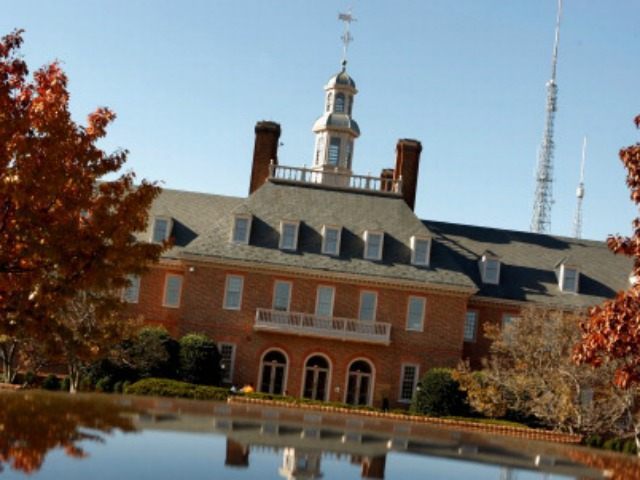Mario Ugoletti tried to get out of the swamp but the swamp keeps dragging him back in.
Ugoletti is a career civil servant who went to work for the U.S. Department of Treasury after getting PhDs in Philosophy and Economics from Penn State University in 1995. He started during the Clinton administration and was elevated to be the head of the Office of Financial Institutions Policy during the Bush administration. When the financial crisis struck he moved to the Federal Housing Finance Agency, a newly created arm of the government that had taken over Fannie Mae and Freddie Mac when they failed.
Although Ugoletti retired from the agency in September of 2015, he is once again in the news following the unsealing of documents in a federal case brought by investors in Fannie and Freddie. A story by New York Times columnist Gretchen Morgenson claimed that one of the documents contradicted a declaration Ugoletti swore in 2013 in connection with the lawsuit. Rolling Stone’s Matt Taibbi made a similar argument.
That would be a major scandal if it were true. But it is clearly not. The newly unsealed documents do not contradict Ugoletti’s sworn statement. They confirm it.
The lawsuit stems from a 2012 change to the bailout of Fannie and Freddie that entitled the government to all of the profits of the two mortgage finance companies. Investors in the companies, including hedge fund managers such as Bill Ackman and famed money manager Bruce Berkowitz of Fairholme Funds, sued in several federal courts, claiming that the new arrangement violated their rights, took their property without compensation, and generally treated them shabbily.
The Treasury said the move was necessary because the original arrangement was putting the companies at risk. Under the original terms, Fannie and Freddie were obligated to pay an annual dividend equal to 10 percent of the bailout funds they had received. But as the size of the bailouts rose, Fannie and Freddie struggled to pay the dividend. When earnings were insufficient to finance the dividend, the companies were forced to draw down even more bailout funds from Treasury just to pay it back to Treasury as a dividend. The profit sweep ended this circular draw by setting the dividend equal to the profits, meaning the government would get bigger dividends in good times and smaller dividends in bad times.
By subscribing, you agree to our terms of use & privacy policy. You will receive email marketing messages from Breitbart News Network to the email you provide. You may unsubscribe at any time.
When Ugoletti was questioned by lawyers for the investors about this in 2013, he said that the size of the bailout had grown so large that “it appeared unlikely that either of the enterprises would be able to meet that amount consistently without drawing additional funds from Treasury.”
The unsealed documents back up this claim. They show that according to a December 2011 analysis by Treasury Department officials, it appeared that Fannie and Freddie would end up having to draw up to $100 billion of additional rescue funds over the next ten years. That would have depleted their level of government support, capped at $275 billion, to potentially dangerous levels.
Both Morgenson and Taibbi mistakenly argue that this is contradicted by a document that shows that the government in 2012 believed that “Freddie is expected to be net income positive by the end of 2012, and Fannie by the end of 2013.” But there is no contradiction because it is quite possible for Fannie and Freddie to be “net income positive” while still not earning enough to be able to pay the 10% dividend.
Not only is it possible. It has actually happened. Last year, both Fannie and Freddie were “net income positive”–which just means that they were profitable–but profits were not high enough to pay the nearly $19 billion in dividends they would have owed.
The other error made by both Morgenson and Taibbi involves Ugoletti’s statement that the intention of the 2012 “was not to increase compensation to Treasury.” Several of the unsealed documents show that Treasury officials argued that the 2012 change would probably result in higher payments to tax-payers than the 10 percent dividend.
But here too there is no contradiction. Under the 10 percent arrangement, dividends had to be paid by first drawing taxpayer money and then sending it back to the U.S. Treasury. These were illusory dividends, like borrowing money from your landlord to pay your rent. The profit sweep ended these illusory dividends and made sure that all future dividends would be new money coming into Treasury. That is indeed a better deal for taxpayers but it does not prove that the intention of the new arrangement was to get more money for Treasury.
Why did Morgenson and Taibbi both arrive at such similar conclusions, using almost exactly the same documents? Whatever the reason, the result of these twin errors is the spread of a calumny without basis in fact or logic.
Ugoletti served his country for three decades in the Treasury Department and housing finance agency, an anonymous and hard-working civil servant who never took up the temptation to go off to Wall Street for the big money. And now, after he has retired, he finds himself pilloried by a press either unable to see the basic facts or perhaps bamboozled by hedge fund spin doctors out to destroy his reputation in pursuit of their dreams of avarice.

COMMENTS
Please let us know if you're having issues with commenting.